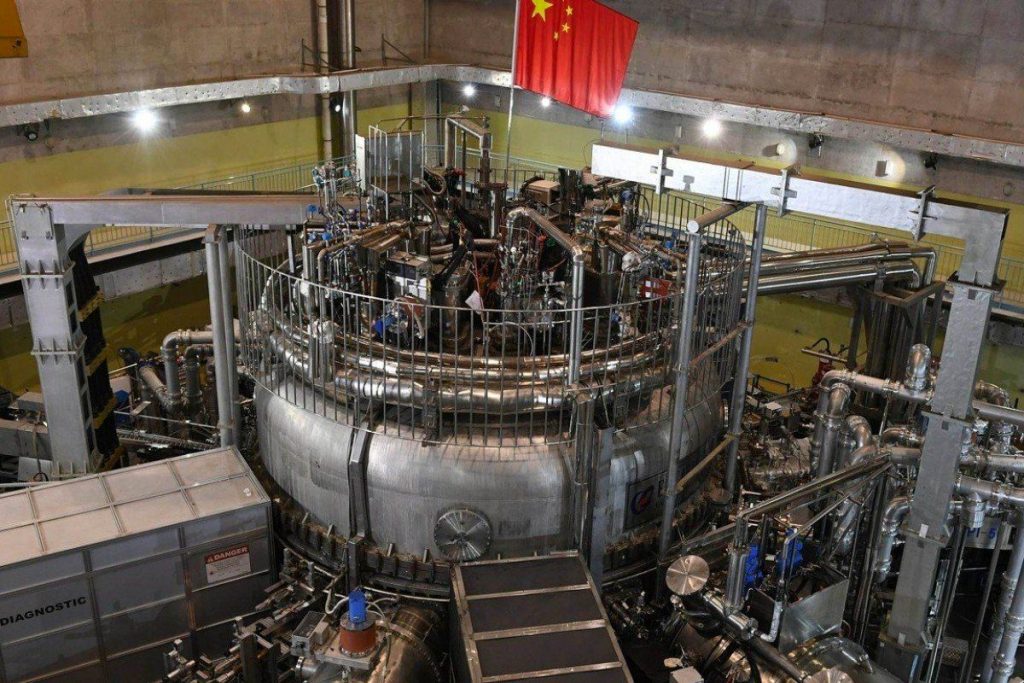Context:
Recently, China’s “artificial sun,” the EAST (Experimental Advanced Superconducting Tokamak), set a new record by maintaining the plasma for over 1000 seconds at 100 million degree celcius.
More on the news:
- This achievement was made by scientists at the Institute of Plasma Physics (ASIPP) under the Chinese Academy of Sciences.
- The previous record held by this project was 403 seconds.
About the EAST (Experimental Advanced Superconducting Tokamak):
EAST is located in Hefei, Anhui Province of China. A new generation of experimental fusion research facilities is currently under construction.
EAST has been operating since 2006 as a platform for fusion experiments by Chinese and international scientists.

- EAST is one of many nuclear fusion reactors around the world, but they all currently consume more energy than they produce.
The East project aims to further accelerate the development and application of fusion energy.
It has been surpassing its goals in high-confinement mode, a key mode for experimental fusion reactors.
The data collected by EAST in this experiment will improve other fusion reactors in China and worldwide.
China is also part of the international ITER fusion program, with countries like the U.S., U.K., Japan, South Korea, and Russia.
About ITER:
The nations participating in ITER include the 27 member countries of the European Union plus China, India, Japan, Korea, the Russian Federation, and the United States.
- Switzerland announced that it will rejoin ITER in 2026. The UK after Brexit remain outside this project.
While many other smaller fusion experiments are underway globally, most of them still coordinate, cooperate, or collaborate with the ITER Organization.
The ITER international collaboration and its large-scale building project is underway in Saint Paul-lez-Durance, southern France.
India joined ITER officially in 2005.
When operational in 2035, it will be the biggest Tokamak device to test magnetic confinement for fusion energy production.
The goal of ITER is to achieve fusion power production at a power plant scale, breaking new ground in fusion science and demonstrating fusion reactor technology.
Significance of Fusion energy reactors:
- Fusion energy is extremely efficient, as one gram of fuel can produce the same amount of energy as burning about eight tonnes of coal.
- Fusion uses deuterium and tritium, two isotopes of hydrogen that are widely available in nature thus offering the possibility of an almost limitless supply of fuel for energy production.
- Unlike nuclear fission, which produces dangerous and long-lasting waste, fusion does not generate hazardous nuclear waste, making it a safer alternative for energy production.
- If fusion becomes feasible, it could play a pivotal role in addressing the climate crisis by providing abundant, clean, zero carbon emission, and sustainable energy for the long term.
Nuclear Fusion and Fission:
| Nuclear Fusion | Nuclear Fission |
| The nucleus of a bigger (heavier) atom converts into smaller nuclei. | Smaller Nuclei join to form bigger (heavier) atom |
| The nuclear reaction does not occur naturally. | It is found in the sun and other stars. |
| The release of energy occurs in this process. | A high amount of energy is needed in this process. |

